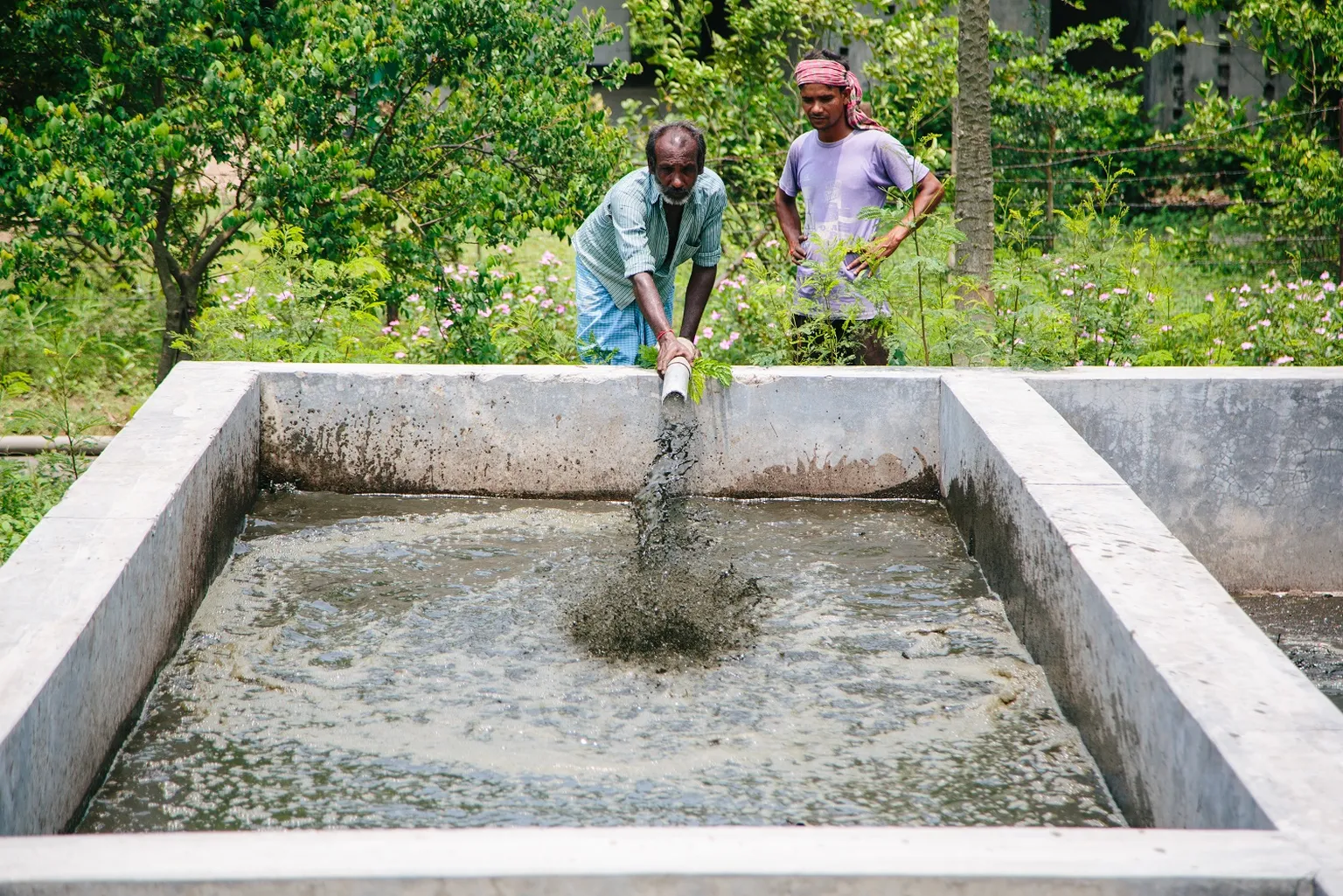Treatment technologies in practice: On-the-ground experiences of faecal sludge and wastewater treatment

Latest SNV and ISF-UTS publication highlights practical and real-life accounts of decision-makers and utility personnel in the selection, management, and operationalisation of faecal sludge and wastewater treatment technologies.
The world can no longer afford to sidestep the urgent need for safely managed sanitation services. Coupled with the very real threats of climate change effects and antimicrobial resistance, more than half the world's people who live in densely populated and emerging urban areas are facing a public and environmental health crisis. It is a matter of rights and survival.
Over the years, SNV and partners have seen too many faecal sludge and wastewater treatment technologies fall into disrepair. For those still up and running, many work in less-than-optimal levels. In spite of the numerous treatment technology manuals and process documentation available to the public, this is the sad reality. Noticeably, documentation of the real-life accounts of the very people behind the decision to select a specific technology, and of those involved in service operations and management is limited.
This publication is the latest of SNV and ISF-UTS' growing contribution to learning and exchange in the urban sanitation sub-sector. It seeks to address a gap in available information. Compiling nine case studies from Asia and Africa, the publication presents real-life stories and practical experiences of people's engagements with several treatment technologies in the market. By making this type of information available to the larger public, SNV and ISF-UTS encourage decision-makers and investors exploring the range of treatment technologies to also consider how people, in diverse settings, interact with treatment technology options.

The publication is also available in separate chapters for download and/or viewing.
Summary: Foreword, Introduction, Key insights, and Overarching considerations
Case study 1: Mechanised and conventional faecal sludge treatment, Duri Kosambi, Indonesia [with contributions from PD PAL Jaya]
Case study 2: Constructed wetland for faecal sludge treatment, Khulna, Bangladesh [with contributions from University Grants Commission of Bangladesh, Khulna City Corporation, and Khulna Faecal Sludge Treatment Plant]
Case study 3: Coco peat filter and reuse production, Kushtia, Bangladesh [with contributions from Kushtia Paurashava and Environmental Resource Advancement Services]
Case study 4: Briquette production as reuse in Nakuru, Kenya [with contributions from NAWASSCOAL]
Case study 5: Anaerobic respiration for faecal sludge treatment and reuse, Lusaka, Zambia [with contributions from Lusaka Water and Sanitation Company, BORDA, Water & Sanitation for the Urban Poor-WSUP]
Case study 6: Black soldier fly (waste) treatment in Nairobi, Kenya [with contributions from Sanergy]
Case study 7: Deep row entrenchment, Asia and Africa [with contributions from Partners in Development, WASH Institute India, IWK Malaysia]
Case study 8: Use of rotating biological contactors, Banjarmasin, Indonesia [with contributions from PD PAL Kota Banjarmasin]
Case study 9: Decentralised wastewater treatment system, Makassar, Indonesia [with contributions from Public Works Makassar, UPT PAL Makassar]
Further resources
Joint SNV and ISF-UTS summaries and briefs
Joint SNV and ISF-UTS long reports
Urban Sanitation and Hygiene for Health and Development approach
USHHD curated list of publications and learning materials
WASH SDG consortium project (financed by the Ministry of Foreign Affairs of the Netherlands)
CWISE project (financed by the Bill & Melinda Gates Foundation)
Interested to learn more?
Contact SNV experts Antoinette Kome or Rajeev Munankami to learn about how developments in urban sanitation are contributing to larger ambitions to achieve water security and more climate resilient societies.